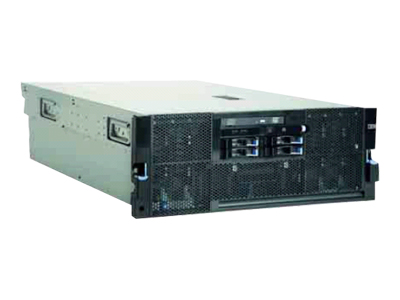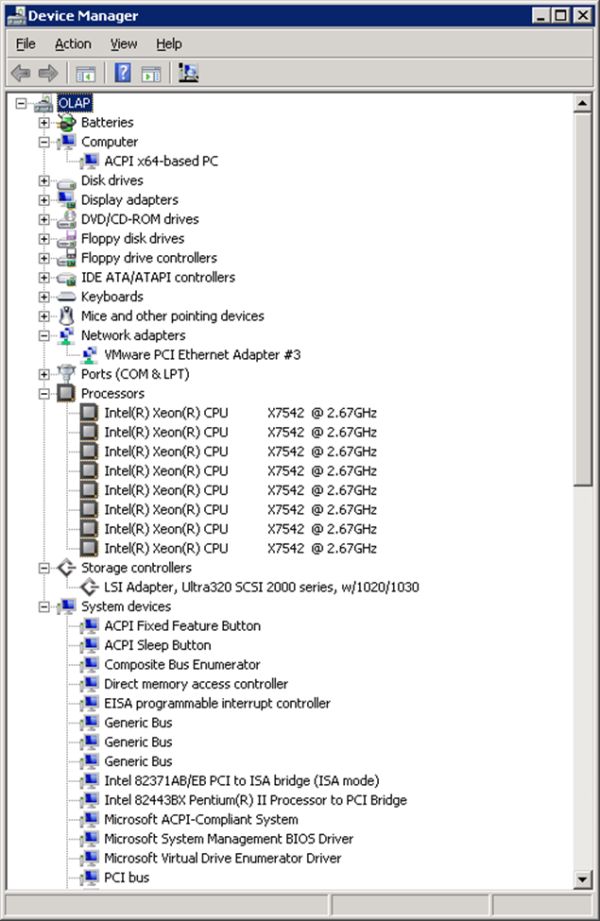Infrastructure as a Service: Benchmarking Cloud Computing
by Johan De Gelas on June 2, 2011 8:50 PM EST- Posted in
- IT Computing
- IT Computing general
- Cloud Computing
The Hardware Behind the Enterprise Cloud
The actual hardware in the Enterprise Cloud is of course a moving target. Terremark claims that every cluster is renewed every three years. In the beginning of 2009, the Enterprise Cloud was based on IBM x3850M2 servers and Fibre Channel IBM System Storage N6040 based SANs. Apparently this would mean that the early Enterprise Cloud was powered by highly clocked Xeon 7400 CPUs. The US based data centers are also using quad Xeon HP DL580 and quad Opteron HP DL585 servers.

Currently, the infrastructure we tested in Amsterdam is based on the Xeon X7542, the highest clock speed “Nehalem-EX” processor. This six-core Xeon runs at 2.67GHz and can Turbo Boost to 2.8GHz.
It is interesting that Terremark chose this particular Xeon. First of all, we have shown that servers based on the fastest Xeons 7500 come with a much lower performance/watt ratio than the Xeon X5600 and Opteron 6100 series. It looks like Terremark decided in favor of raw performance and high availability over power and cost. Second, the Xeon X7542 was not available until Q1 2010, so it is likely that we tested one of the higher performance parts of the Terremark Enterprise Cloud. Terremark claims that all server clusters are replaced every three years, so chances are slim that you will end up with the old Xeon 7400 based servers.
From the customer point of view, that is good news. We don’t have to pay the power bill and the GHz power comes from a raging bull rather than a squawking chicken. If we order 5GHz, it is is more likely that this comes from two 2.5GHz cores instead of 10 500MHz cores. Thus, we expect good CPU performance from this cloud--as you can imagine, we would not be fans of a Sparc T3 based cloud for CPU intensive loads (though network intensive might be better).
A valid concern in a cloud computing environment is that a possible attacker can be on the same network as you behind the same firewall. In other words, somebody could buy some server space to try and attack you. Terremark uses VLAN network partitioning and PCI-compliant firewalls to ensure security.











29 Comments
View All Comments
TRodgers - Thursday, June 2, 2011 - link
I like the way you have broken this subject it to small succinct snipets of value information. I work in a place where many of our physical resources are being converted into virtual ones, and it is so often difficult to break down the process, the reasoning, and benefit trees etc to the many different audiences we have.johnsom - Friday, June 3, 2011 - link
You said:Renting 5GB of RAM is pretty straightforward: it means that our applications should be able to use up to 5GB of RAM space.
However this is not always the case with IaaS. vSphere allows memory over committing which allows you to allocate more memory across the virtual machines than the physical hardware makes available. If physical RAM is exhausted your VM gets swap file space tanking your VM memory performance. Likely killing performance when you need it most, peak memory usage.
GullLars - Friday, June 3, 2011 - link
If the pools are well dimentioned, this should almost never happen.If the pagefile is on something like an ioDrive, performance wouldn't tank but be a noticable bit slower. If the pagefile is on spinning disks, the performance would be horrible if your task is memory intensive.
duploxxx - Sunday, June 5, 2011 - link
THat is designing resource pools, if a service company is that idiot they will run out of business.Although swapping on SSD (certainly on next gen vsphere) is another way to avoid the slow performance as much as possible it is still slower and provides Hypervisor overhead.
Ram is cheap, well chosen servers have enough memory allocation.
ckryan - Friday, June 3, 2011 - link
I'm quite pleased with the easy, informative way the article has been presented; I for one would like to see more, and I'm sure future articles on the way. Keep it up, I think it's facinating.JohanAnandtech - Sunday, June 5, 2011 - link
Thank you for taking the time to let us know that you liked the article. Such readers have kept me going for the past 13 years (started in 1998 at Ace's ) :-).HMTK - Monday, June 6, 2011 - link
Yes, you're old :p The main reason I read Anand's these days is exactly for your articles. I liked them at Ace's, like them even more now. Nevertheless, nostalgia sometimes strikes when I think of Aces's and the hight quality of the articles and forums there.bobbozzo - Friday, June 3, 2011 - link
Hi, please include costs of the systems benchmarked... in the case of the Cloud, in $/hour or $/month, and in the case of the server, a purchase price and a lease price would be ideal.Thanks for all the articles!
bobbozzo - Friday, June 3, 2011 - link
Oh, and include electric consumption for the server.krazyderek - Friday, June 3, 2011 - link
i agree, showing a simple cost comparison would have really rounded out this article, it was mentioned several time "you pay for bursting" but how much? put it in perspective for us, relate it to over purchasing hardware for your own data center.